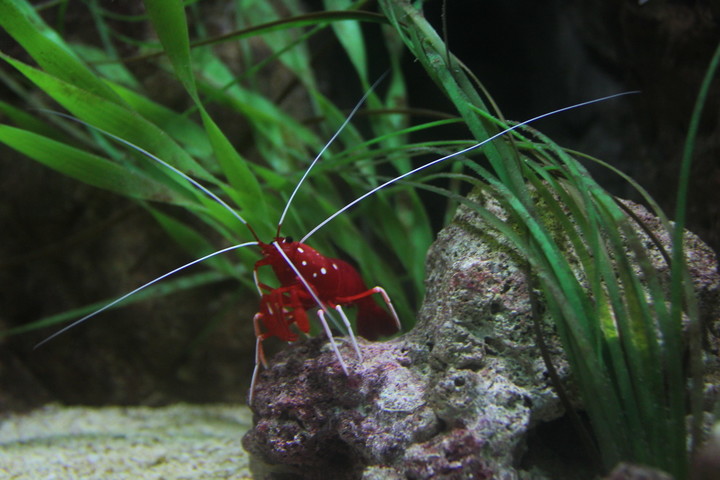Lysmata debelius


| Latin name | Lysmata debelius |
|---|---|
| Local name | Blood shrimp |
| Family | Alpheoidea - Lysmata |
| Origin | East Indian Ocean |
| Max length | 3 cm (1.2") |
| Minimum volume |
50 l (13 gal) |
|---|---|
| Hardiness |
Average |
| Suitable for aquarium |
Suitable for most aquarium |
| Reef safe |
Often reef safe |
| Aggressiveness | Peaceful |
| Recommended |
Small crustaceans (Krill, mysis, artemia...) |
|---|---|
| Mostly |
Detritus |
| Maybee |
Parasites Soft coral |
This species needs good hiding places, for example, between live rocks.
This species is nocturnal and therefore the most active when the light is dimmed or turned off.
This species is able to remove parasites from fish.
It does not have a great impact on a large outbreak of marine ich (Cryptocaryon), for example, but it contributes towards keeping fish parasite free.
Constant cleaning can stress the fish in the aquarium, so one should not add this fish which removes parasites, if the fish are already weakened through other causes.
Not all specimens actively clean fish.
Shrimps have many different purposes in the tank, some are just pretty while others are shy but useful. Some remove parasites whilst others help fight different pests.
Read more about the different genera and species for more specific information.
Lysmata debelius - Wikipedia - (English)
Ronald L. Shimek. 2004. Marine Invertebrates (PocketExpert Guide) - TFH Publications / Microcosm Ltd. - (English)
Bob Fenner. Cleaner Shrimps of the Family Hippolytidae - Wet Web Media - (English)
James W. Fatherree. A Few Common Shrimps for the Marine Aquarium - Wet Web Media - (English)

